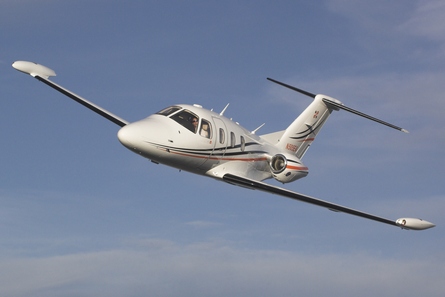Top US Federal Aviation Administration officials went on the defensive in Washington on 17 September as current and former FAA employees, backed by a searing US Department of Transportation watchdog report, questioned the FAA's actions related to the certification of the Eclipse 500 very light jet in late September 2006.
"This isn't about a certification process riddled with flaws," DoT inspector general Calvin Scovel told a House aviation committee in the contentious six-hour congressional hearing. "What this case is about is an accommodative approach to a new manufacturer using new technology and a new business model to put a high-speed, high-altitude jet in the hands of relatively inexperienced private pilots."
 |
|---|
© Eclipse Aviation |
The hearing was launched in response to allegations from FAA engineers and safety inspectors who contacted the committee in March. The employees alleged that serious design problems with the aircraft were flagged during the certification process but not corrected before the issuance of the type certificate (TC), in part because senior FAA officials had a too-close relationship with the company. In addition, Scovel said FAA executive performance reviews were tied to completing the Eclipse certification by 30 September 2006, the date the TC was ultimately approved. The FAA discounted that assertion, saying the goal to certify a VLJ that fiscal year had earlier been met with the granting of a TC to Sino Swearingen for the SJ30.
Along with the launch of Scovel's investigation, the FAA commissioned an internal team headed by former Boeing executive Jerry Mack to review the certification of the aircraft in relation to the post-TC in-service problems, largely gained from information in 85 service difficulty reports.
Safety concerns centred on in-service discrepancies related to "blanking" of primary flight displays (PFDs) and multi-function displays (MFDs), intermittent erroneous stall speeds and flap movement failures - issues the FAA said were not apparent during certification and are not a safety concern now. Scovel however said certification engineers and inspectors experienced "at least four inappropriate stall warnings during landing, 10 instances of screen freezing or blanking and 18 cases of either actual flap failure or flap failure messages" during 100h of "pre-condition" testing in the two weeks before the TC was granted.
FAA associate administrator for aviation safety Nicholas Sabatini testified that flap issues were cause by "system errors" and "only one occurrence" of flaps moving asymmetrically was recorded during certification. He added that most test pilots "did cite a more frequent problem" of receiving flap failure messages and that the issue was "mitigate by improving the flight manual procedures to assure operational safety".
Regarding too-frequent stall speed indications, Sabatini said there were no "false readings" but rather unexpected warnings due to Eclipse providing too-low stall speed values for certain conditions in the flight manual. As in the case of the flap errors, Sabatini said the certification standard had been met. Problems with screens blanking out, he continued, were mitigated by having two PFDs and one MFD on the flight deck. "Although there were times when a screen blanked out, the bottom line is that never more than one screen blanked out at any given time," said Sabatini.
While neither the FAA nor the DoT inspector general has cited safety concerns for the more than 200 Eclipses in the active fleet, Scovel did call for the agency to immediately "reassess" whether the aircraft should be certified for single-pilot operations and to expedite a proposed rulemaking that bridges the certification gap between large transport aircraft (Part 25) and general aviation aircraft (Part 23), under which the Eclipse 500 was certified.
Source: Flight International























